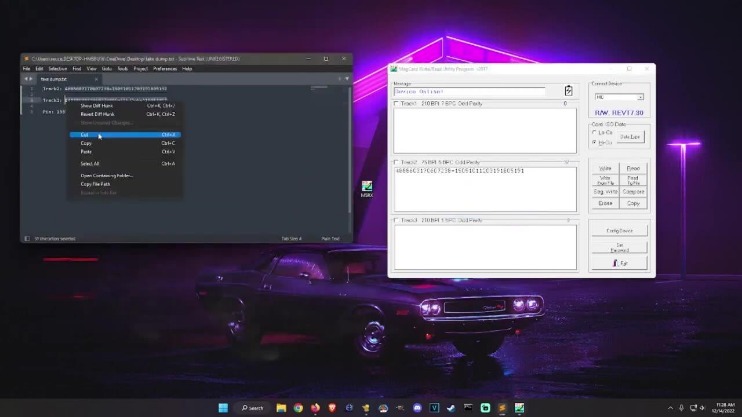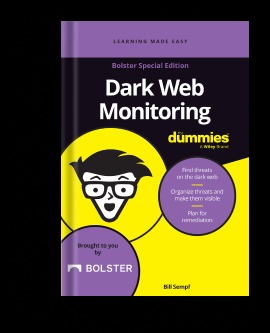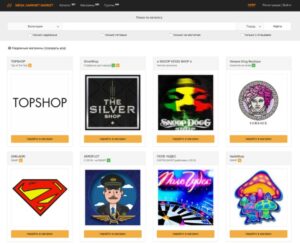
Primarily, the actors use Android-based phones, with numerous cards “loaded” into mobile wallets for further fraud. In one such instance, cybercriminals specifically focused on fraud automation against Barclays, Lloyds, Halifax, HSBC, WISE, Santander, Bank of Scotland, and Revolut. API securityeCommerce sites often use credit card APIs, such as those offered by PayPal or Square, to facilitate transactions. These APIs can be vulnerable to attacks, such as JavaScript injection or the rerouting of data, if not incorporated with the appropriate security. To protect against many of these attacks, eCommerce sites can use a combination of Transport Layer Security (TLS) encryption and strong authentication and authorization mechanisms, like those offered by OAuth and OpenID.
ReliaQuest Internship Program Prepares Students For The Future Of Cybersecurity

Several notorious dark-web marketplaces have emerged as dominant platforms for selling stolen credit card data. Among the most infamous was Joker’s Stash, one of the largest carding marketplaces, active from 2014 until its closure in early 2021. Joker’s Stash gained notoriety due to its massive inventory of millions of stolen cards, advanced security measures, and sophisticated user interface.
Responsibility Of Businesses To Prevent Carding
You can access deep and dark web data through our dark web API and perform detailed data analysis with Lunar. These tools help you easily investigate the illicit activities hidden in forums across the dark web. XSS is one of the most prominent and well-regarded hacker forums on the dark web. Named after the web security vulnerability “Cross-Site Scripting (XSS),” the forum caters primarily to Russian-speaking cybercriminals and hackers. It has gained a reputation for its professional approach and the high quality of its content, attracting a sophisticated and experienced user base.
Additionally, carders themselves are vulnerable to scams and fraud within the carding community, as they often interact with fellow criminals who may exploit their trust or steal their profits. Carding has far-reaching consequences for individuals, financial institutions, and the global economy. Victims of carding often suffer financial losses, compromised personal information, and damaged credit scores. Financial institutions face significant financial burdens, as they must reimburse victims and invest in enhanced security measures.
We’ve been tracking the carding-related chatter throughout 2022 and have seen worry morph into frustration, and then into predictions that carding is on its way out. But recent cyber criminal chatter indicates all is not well in the carding world. A combination of factors—law-enforcement action, increased defenses, the list goes on—has many threat actors predicting the death of carding entirely. Carding sites facilitate the trade of stolen card data, tools and tutorials, often operating on the dark web. The data posted on these online illicit shops is a goldmine for threat actors who are looking to commit financial crimes.
AI-Based Detection Methods

They target financial institutions to defraud consumers and cause substantial economic losses for the global economy. Known for its vast user base and extensive range of illicit content, Nulled is a hub for cybercriminal activities, including the exchange of stolen data, hacking tools, and cracked software. Despite significant disruptions, including a major hack in 2016, Nulled has maintained its status as a key player in the cybercriminal ecosystem. Forums provide a marketplace for buying and selling stolen data, including credit card information, personal identities, and login credentials. Post the dismantling of Joker’s Stash, cybercriminals displayed adaptability by establishing new marketplaces to fill the void, highlighting the resilience of criminal enterprises. This adaptability underscores the ongoing challenge faced by financial institutions in combating the ever-evolving threat of dark web credit card marketplaces.
Marketplace Registration And Security
- XSS is one of the most prominent and well-regarded hacker forums on the dark web.
- Unlike traditional magnetic strips, EMV chips generate unique transaction codes for every purchase, making card duplication exceedingly difficult.
- If caught, credit mules face criminal charges, which can result in fines, imprisonment, and a tainted criminal record that may hinder future employment prospects.
- The carder authenticates card numbers en masse by deploying a bot network to attempt small purchases on multiple online payment sites.
- STYX Market focuses specifically on financial fraud, making it a go-to destination for cybercriminals engaged in this activity.
- Some carders also track your IP (Internet Protocol) address to snag your credit card info.
When browsing, shopping, or banking online, be wary if you’re redirected to websites that feel off or have slightly altered URLs. Things like suspicious design flaws, spelling mistakes, and broken links should set off your alarm bells. These could be fraudulent sites made to mimic the real deal to steal your card details or login credentials.
Advertising Carding On Legitimate Platforms
Experienced carders won’t benefit from sharing advice, as they used to do, and it would only increase the competition in an already-difficult market. By surfacing context around emerging threats – such as tactics used by carding groups or trending tools – Silobreaker enables fraud teams to take proactive action. This intelligence-driven approach improves incident response, limits financial loss and protects brand integrity.
The Dark Web’s Largest Forum For Stolen Credit Card Data Is Shutting Down
Implementing a 3-D Secure ACS solution, like Outseer 3-D Secure, fortifies the fraud prevention strategy. This EMV® 3-D Secure ACS delivers a secure, frictionless digital shopping experience, providing a multi-layered defence against unauthorized transactions. By adding an extra layer of authentication, financial institutions reduce the risk of fraudulent activities during transactions. This proven technology, seamlessly working in the background, analyses transaction data and authenticates users in real-time, ensuring only legitimate transactions proceed.

After buying stolen credit card information, fraudulent actors use carding bots to validate the information. These bots automate the process of making small transactions on e-commerce websites to test if the card is active, and they can be used without triggering fraud alerts. Card data on the dark web is a valuable commodity, and it’s often sold on specialized marketplaces known as Card Shops.

Or it might be the old-fashioned method—using a physical ATM skimmer equipped with a recording device to gather information when a victim inserts their card into a payment machine or swipes it. Carding is no longer a low-level scam; it’s a well-organized cybercrime operation enabled by the anonymity of the dark web. The cost to businesses is immense, from chargebacks and damaged reputations to legal liabilities.
- Trump’s Dumps was another prominent carding site specializing in selling raw magnetic strip data from compromised cards – commonly referred to as “dumps” by carders.
- These include carding forums, where they exchange information, tutorials, and tips with fellow criminals.
- However, by staying informed and adopting proactive security practices, you can significantly mitigate these risks.
- I’ve investigated too many breaches where malware jumped from an infected office computer to the payment network.
These cybercrime trends require organizations to stay vigilant, proactively adapting their strategies and tools to counter emerging threats. Because dark web hacker forums strongly emphasize security and anonymity, security professionals and cyber analysts find it challenging to effectively track cybercriminal activities and threats on these platforms. CraxPro is a prominent dark web hacker forum known for its focus on account cracking, data leaks, and trading of stolen digital goods. Since its launch, CraxPro has garnered a large and active user base, making it a significant platform for cybercriminal activities. The forum is designed to cater to novice and experienced hackers, providing various resources, tools, and discussions related to various aspects of cybercrime.
Why Monitor Deep And Dark Web Credit Card Sites?

There are entire websites, channels, and forums dedicated specifically to carding. Unlike other types of stolen data—such as email lists or personal information—carding exists as its own distinct niche within the cyber crime ecosystem. Stolen credit card details are often sold on platforms and websites dedicated to, and branded as, carding websites. There’s an underground ecosystem where sensitive data is bought, sold, and traded—not just on the dark web, as you might expect, but also on publicly accessible websites, channels, and forums.
Step 1: Obtaining The Stolen Credit Card Data
Get a live demo of our security operations platform, GreyMatter, and learn how you can improve visibility, reduce complexity, and manage risk in your organization. Then, on Dec. 17, an apparent raid by authorities saw several of the carding site’s servers seized, temporarily shutting down the illicit business. If you think your site has been carded, look for a spike in small transactions or failed payment attempts, multiple payments from the same IP or device, or increased chargebacks and fraud complaints. Solutions like Stripe Radar, Sift, and ThreatMetrix use machine learning and global fraud data to block high-risk transactions automatically. In a global enforcement operation, U.S. authorities seized over 145 domains tied to BidenCash, a major carding marketplace launched in March 2022. A single campaign may test thousands of cards within minutes, overwhelming servers and bypassing simple rate-limiting tools.



